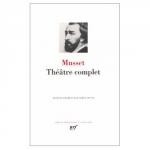|
This section contains 1,549 words (approx. 6 pages at 300 words per page) |

|
SOURCE: Le Vay, John. “Musset's ‘La Nuit d'octobre.’” The Explicator 57, no. 4 (summer 1999): 209-12.
In the following essay, Le Vay observes mythic patterns and imagery of rebirth and redeemed love in Musset's Les nuits poems.
According to myth, in the fall (October), Attis/Adonis is slain. He goes underground in winter (December), is reborn in spring (May), and attains heroic strength in summer (August).1 There is something of that pattern in the four “Nights” (Les Nuits) of Alfred de Musset. But the May rebirth is abortive: “le printemps naît” (line 3), but the frozen poet remains in suspended animation: “who can write on the sand / in the teeth of the north wind?” (194-195).2 December conforms to the underworld archetype, being dominated by a melancholic, ghostly visitant clad all in black. August begins with a lovelorn, girlish goddess and a world-weary, slightly patronizing poet who has not yet recovered the...
|
This section contains 1,549 words (approx. 6 pages at 300 words per page) |

|


